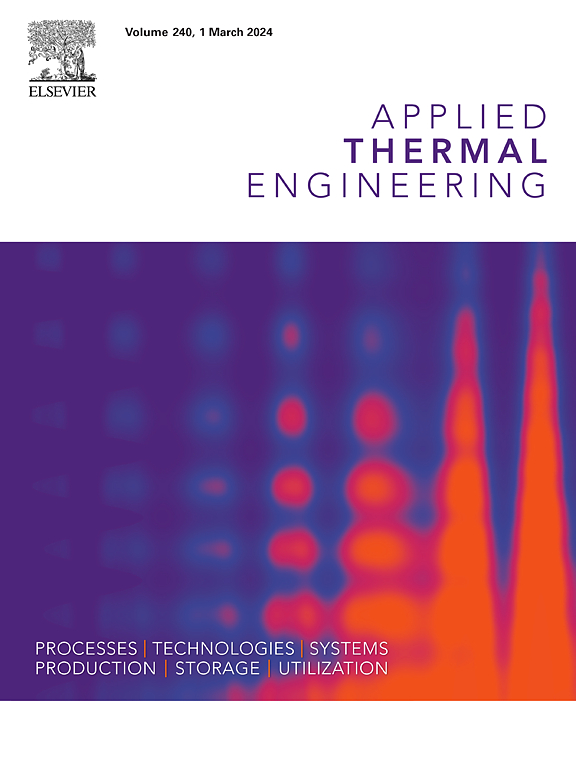A computational study of desublimation tower characteristics for Cryogenic Carbon Capture
IF 6.1
2区 工程技术
Q2 ENERGY & FUELS
引用次数: 0
Abstract
Cryogenic Carbon Capture™ (CCC) offers exceptional efficiency of capturing CO emissions to combat climate change. Despite its promise, optimizing CCC efficiency, particularly in the desublimation tower, remains a challenge. This article presents a comprehensive computational fluid dynamics (CFD) modeling framework to study CCC processes by employing the Eulerian–Lagrangian method with a desublimation mass transfer model. Parametric simulations were conducted to investigate the effect of droplet size on CO capture efficiency. Under a constant spray flow rate, smaller droplets enhance desublimation and heat transfer rates due to their larger total surface area, improving CO capture efficiency and heat exchange. The recirculation region extends gas residence time, further enhancing CO capture in the absence of droplet entrainment. These findings underscore the pivotal role of various factors, including the geometry of the desublimation tower, the shape of the nozzle, and the precise control of gas and spray injection parameters. All these elements are critical in optimizing the efficiency of the carbon capture processes. This investigation provides an important tool for advancing CCC technology, crucial in global climate change mitigation strategies and explores future research directions to enhance the accuracy of simulations and broaden the scope of CCC optimization.
求助全文
约1分钟内获得全文
求助全文
来源期刊

Applied Thermal Engineering
工程技术-工程:机械
CiteScore
11.30
自引率
15.60%
发文量
1474
审稿时长
57 days
期刊介绍:
Applied Thermal Engineering disseminates novel research related to the design, development and demonstration of components, devices, equipment, technologies and systems involving thermal processes for the production, storage, utilization and conservation of energy, with a focus on engineering application.
The journal publishes high-quality and high-impact Original Research Articles, Review Articles, Short Communications and Letters to the Editor on cutting-edge innovations in research, and recent advances or issues of interest to the thermal engineering community.
 求助内容:
求助内容: 应助结果提醒方式:
应助结果提醒方式:


